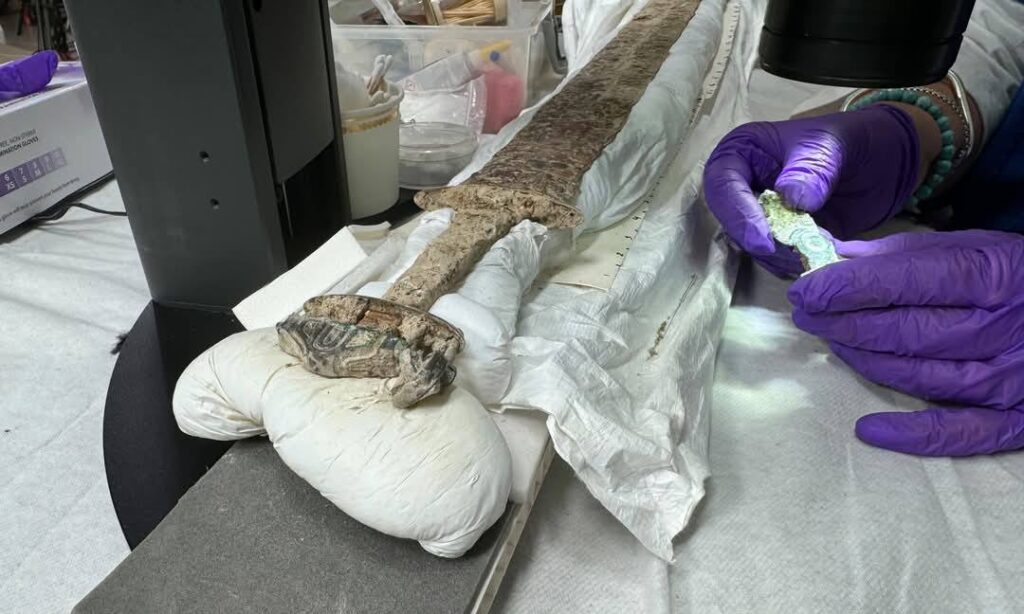The Context of the Discovery
At the end of this year, archaeologists unearthed an ancient sword lying next to a skeleton in a cemetery in Kent, England. The burial site is part of an early medieval cemetery dating back to the 5th or 6th centuries AD, a period associated with the migration and settlement of the Anglo-Saxons. To safeguard the site, the exact location remains undisclosed until the excavations are completed.
The Symbolic Value of the Sword
The Ring on the Sword
The sword features a ring incorporated into its design, a rare and intriguing detail. This ring is believed to symbolize unity, loyalty, or perhaps a sacred vow. In Anglo-Saxon culture, such symbols were often associated with power and social bonds.
Mysterious Rune Inscriptions
The blade bears runic inscriptions, which are thought to represent symbols of power, protection, or even magical significance. Deciphering these inscriptions could reveal valuable insights into the beliefs and worldview of the Anglo-Saxons.
Craftsmanship and Cultural Significance
The Opulence of the Sword Hilt
The hilt of the sword is exquisitely crafted from gold and silver, adorned with intricate decorative motifs. This craftsmanship suggests that the sword’s owner was a person of high social status or held a significant role within their community.
A Scabbard Lined with Beaver Fur
The discovery of the well-preserved scabbard is a rare achievement. Made of leather and wood, the scabbard’s interior is lined with beaver fur—a luxurious and uncommon material at the time. This highlights both the wealth and the advanced craftsmanship of the period.

Exceptional Preservation and Scientific Value
The sword’s extraordinary state of preservation, along with accompanying artifacts, provides a unique opportunity to study details often lost to time. The discoveries at the cemetery have unveiled previously unpublished information about:
- Anglo-Saxon burial practices, including grave arrangements and burial goods.
- Metalworking techniques and the integration of rare and valuable materials.
- The cultural importance of weapons as symbols of power and status.
Historical Significance and Research Potential
This discovery not only serves as a physical testament to the early medieval period but also opens the door to further exploration of Anglo-Saxon life, beliefs, and social structures. The runic inscriptions and details of the scabbard offer critical data to better understand the interplay between native English culture and the influences brought by Anglo-Saxon settlers.

Conclusion: A Living Legacy of the Past
Described as one of the most extraordinary artifacts ever discovered in England, this sword is more than just an archaeological find. It represents a vibrant chapter of history, showcasing the artistry and deep cultural significance of its time.
The sophistication of its design and its symbolic value underscore the importance of preserving and studying historical artifacts. Once the excavation findings are fully revealed, this discovery promises to reshape our understanding of England’s early medieval period and enrich the narrative of its cultural heritage.

